Proving the Superiority of Systematic Designs in On-Farm Trials
AAGI Annual Science Symposium
Jordan Brown, Mark Gibberd, Julia Easton, Suman Rakshit
November 14, 2024
Puzzles

The first piece: GWR 
For constructing the spatial map, we used Geographically Weighted Regression (GWR) compute the regression coefficients at regular grid of points covering the study region (Rakshit et al. (2020)).
Estimation based on the local-likelihood
Estimate local regression coefficients
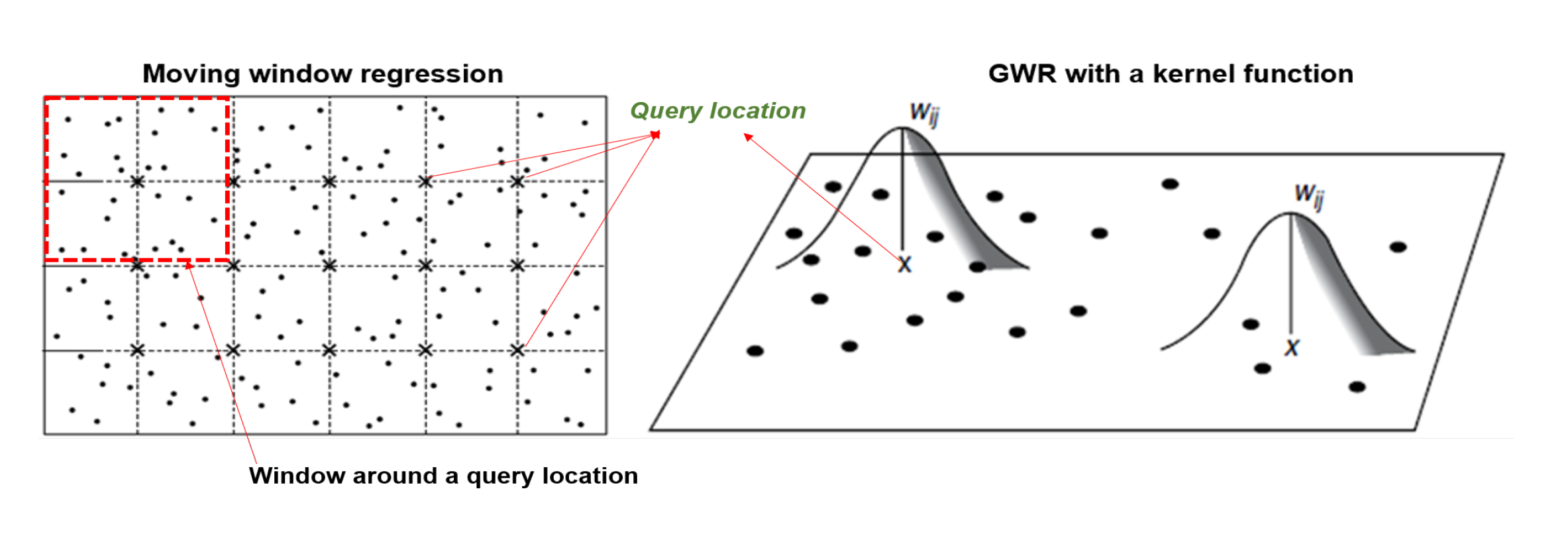
The second piece: BHM 
The Bayesian hierarchical model (BHM) is a powerful tool for spatial data analysis.
It is a flexible approach to model spatially correlated data.
The BHM is used to estimate the regression coefficients at all grid points simultaneously (Cao et al. (2022)).
The BHM is a complementary approach to GWR.
The second piece: BHM 
At location
In matrix notation,
Spatially correlated random parameters
For all
Spatially correlated random parameters
Using this structure is because that only a single treatment is directly observed in any one position.

The spatial model allows the exploiting of information from neighbouring positions with other treatments (Piepho et al. (2011)).
Bayesian workflow
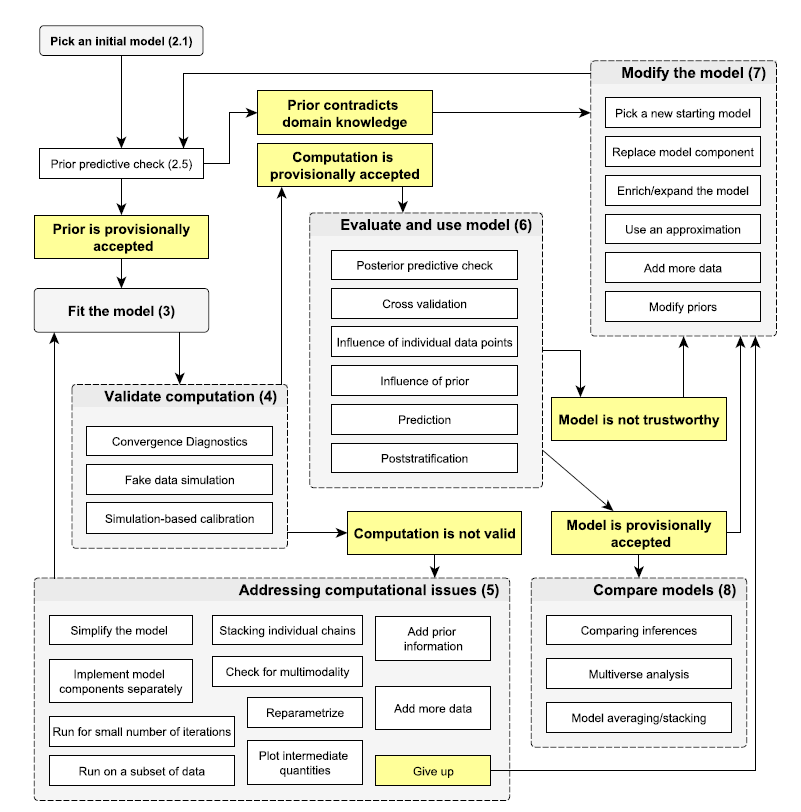

Results
Maps for


Putting two pieces together

The third piece: trial designs 
BHM to generate synthetic OFE data and we know the true values
b andu .GWR to fit the data and estimate coefficients
β̂ .Evaluation: Mean Squared Errors
whereMSEj=1n∑i=1n(β̂ ij−(bi+ui))2 j=0,1 orj=0,1,2 (Cao et al. (2024)).
Different designs
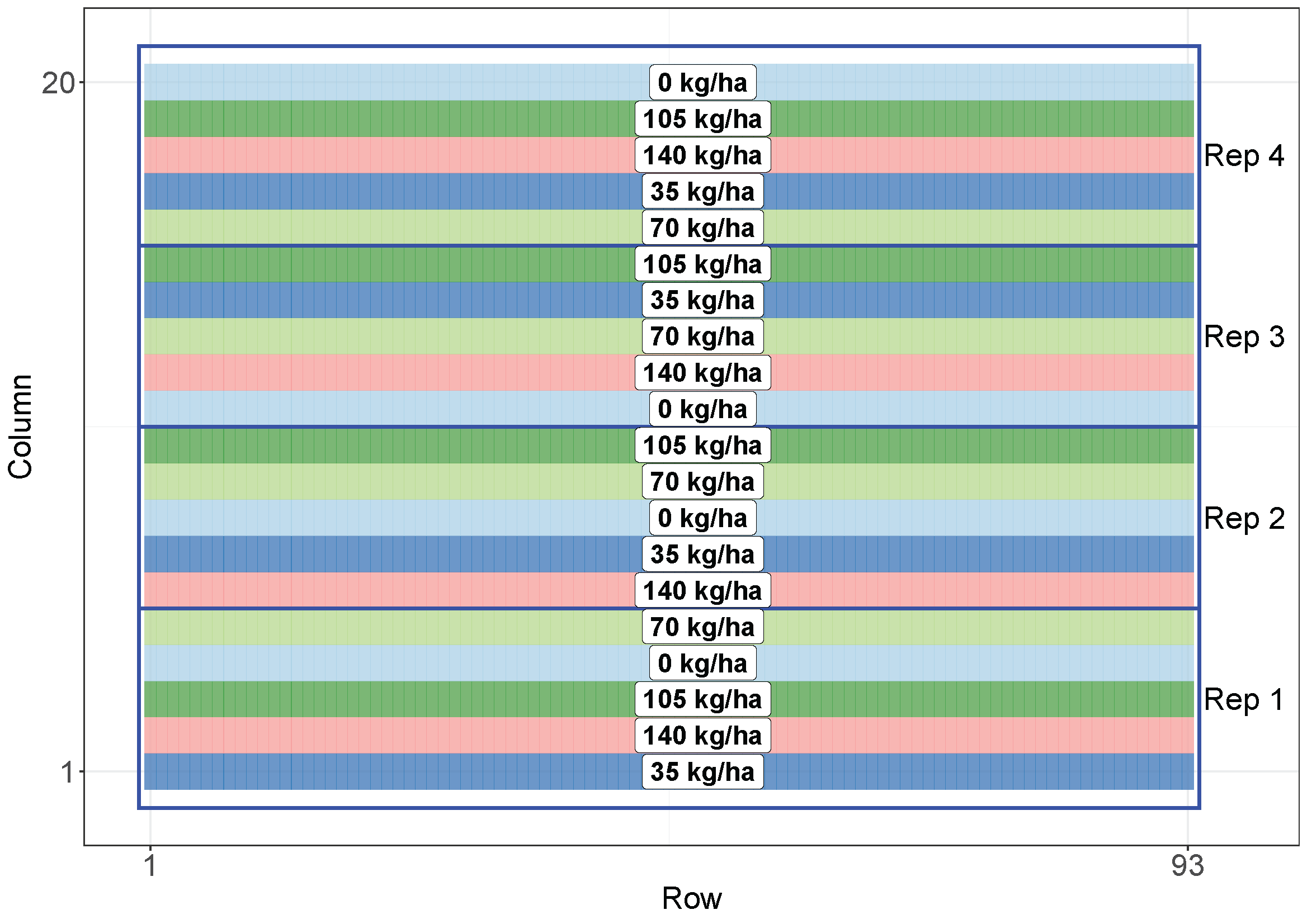
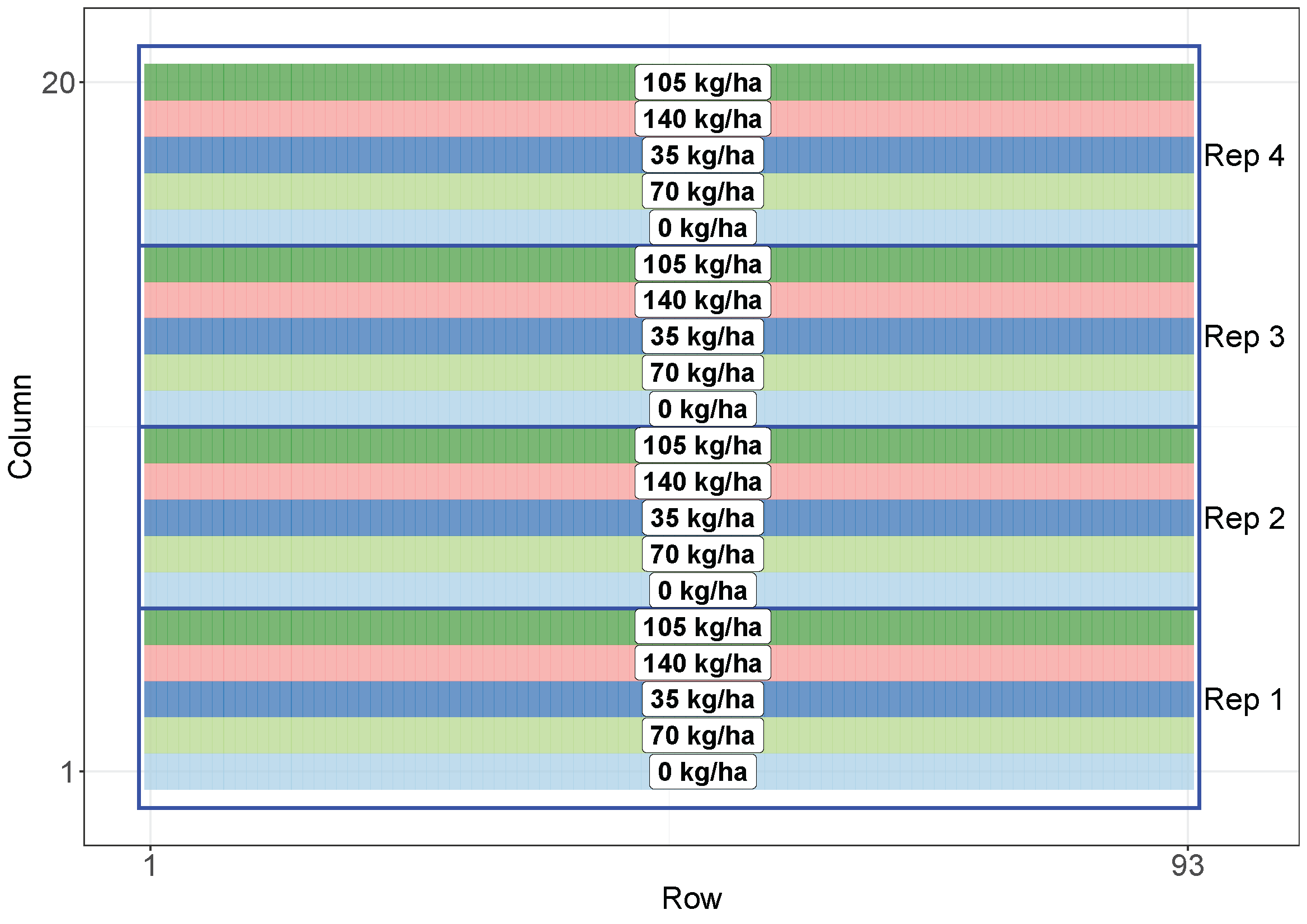
- 5 treatments, 4 replicates, 93 rows
× 20 ranges
Other factors
Response types: linear and quadratic
{LinearQuadraticyi=b0+u0i+(b1+u1i)Ni+eiyi=b0+u0i+(b1+u1i)Ni+(b2+u2i)N2i+ei, Variance-covariance of the random effects,
Vs=I ,Vs=AR1(ρc)⊗AR1(ρr) and Matérn covarianceVs(d)=σ221−νΓ(ν)(2ν‾‾‾√dr)νKν(2ν‾‾‾√dr). Bandwidth selection
Correlation intensity

Results
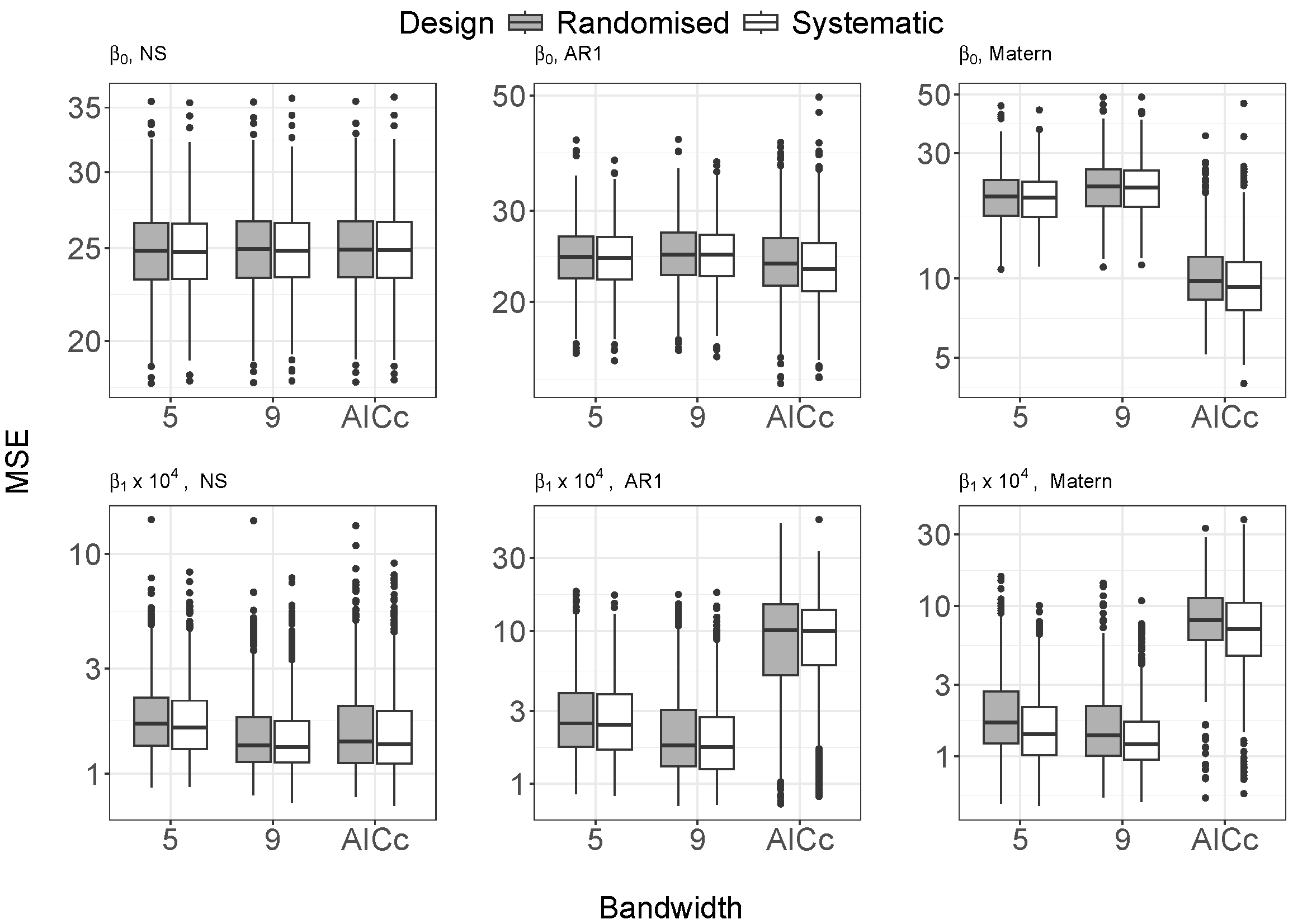

Putting three pieces together

Putting three pieces together

The PE approach 
Pseudo-environments (PE) are created by grouping the grid points based on the spatial correlation structure (Stefanova et al. (2023)).
The PE approach is used to estimate the fixed effects.
The PE approach is for categorical variables.
The PE approach 
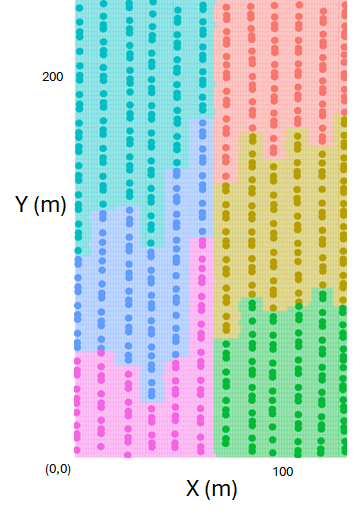
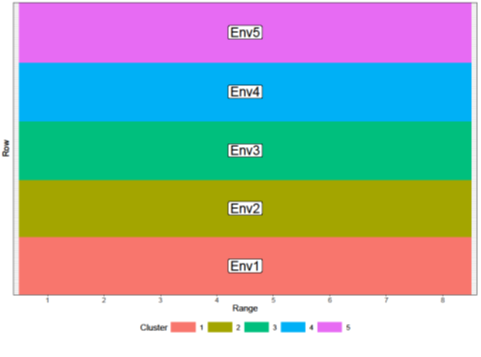
The fifth element

The fifth element 
- BHM again to generate the synthetic data.
The fifth element 
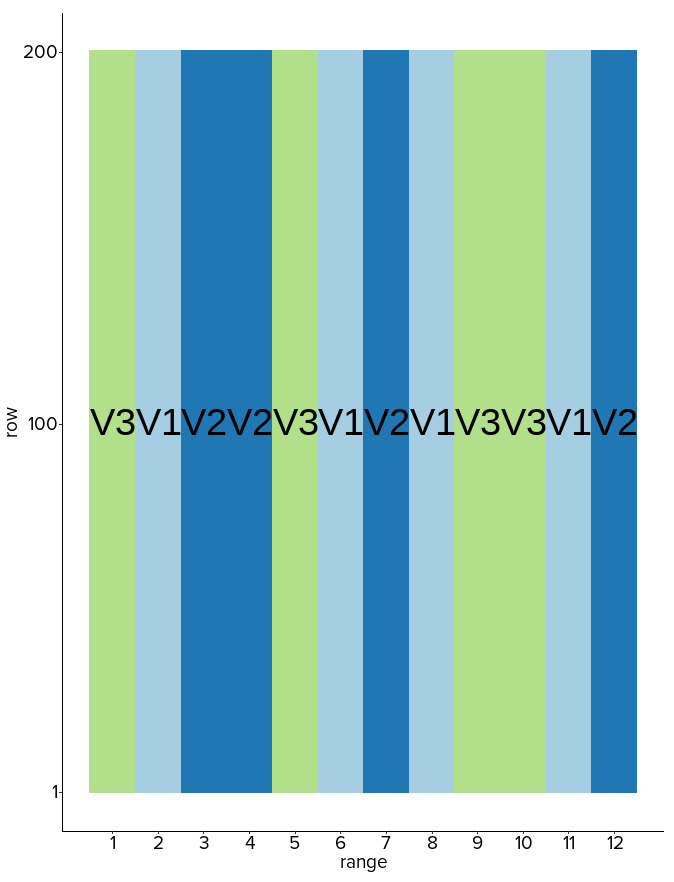
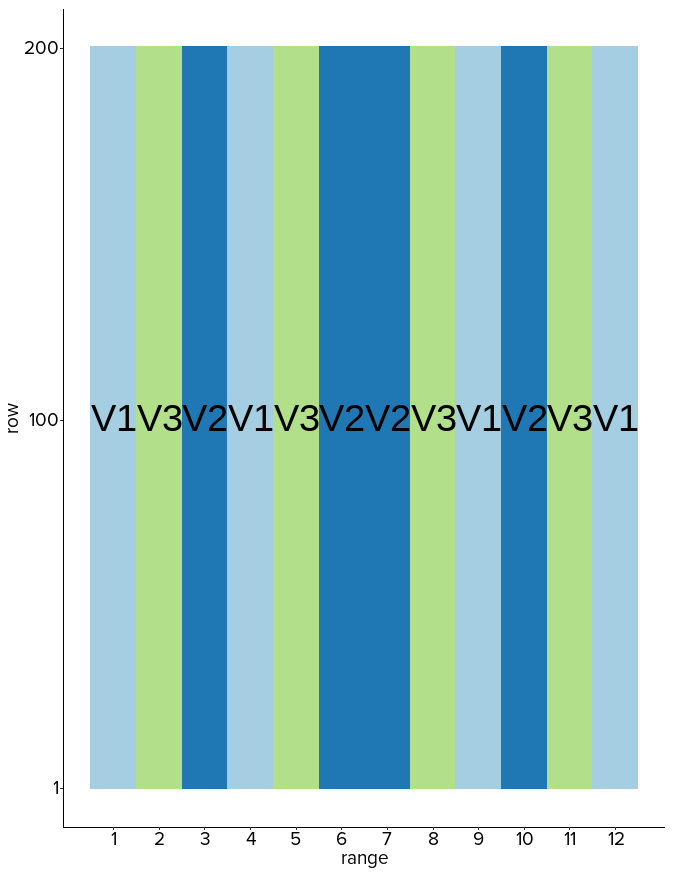
The fifth element 
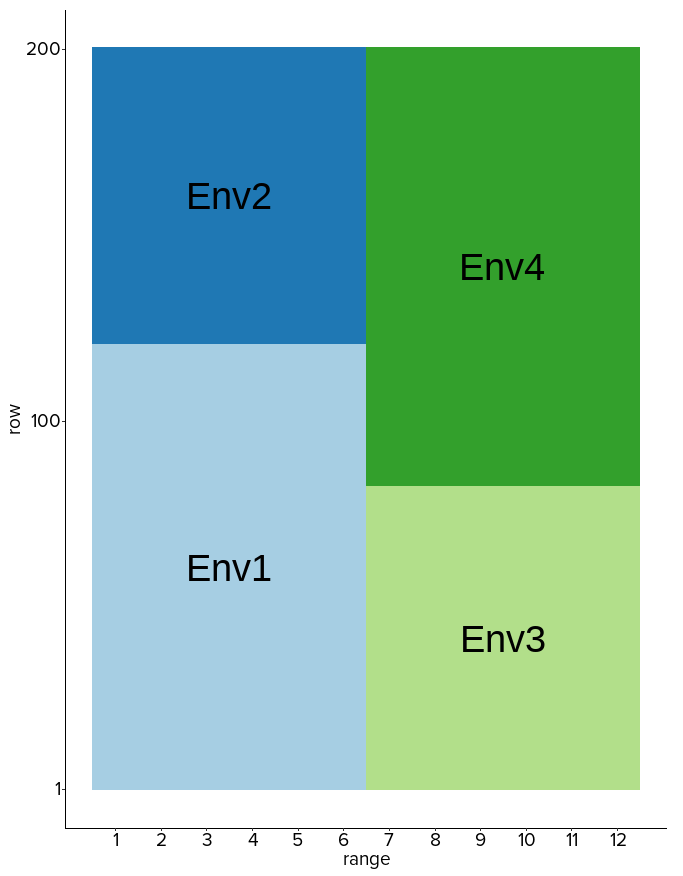
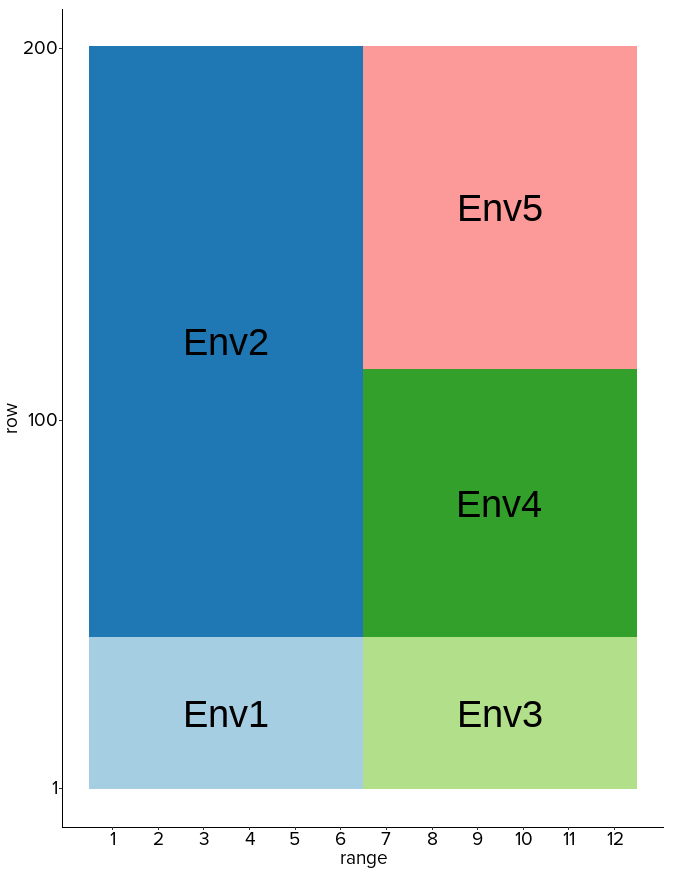
Evaluation
The Mean Squared Error (MSE) for the fixed effects is calculated as:
The MSE for the random effects is calculated as:

Preliminary results
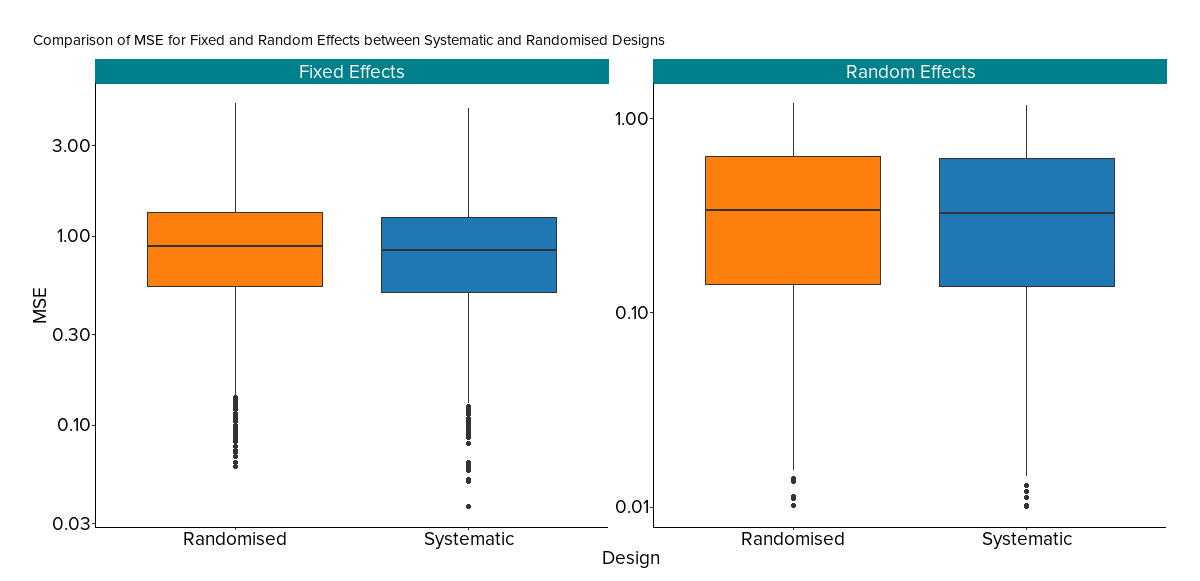
Preliminary results
MSE for fixed effects and random effects across different designs over 2000 iterations.| Type | Design | Mean | Median | Min | Max | Q1 | Q3 |
|---|---|---|---|---|---|---|---|
| Fixed Effects | Randomised | 0.998 | 0.879 | 0.0605 | 5.02 | 0.542 | 1.33 |
| Fixed Effects | Systematic | 0.952 | 0.835 | 0.0369 | 4.76 | 0.503 | 1.26 |
| Random Effects | Randomised | 0.402 | 0.335 | 0.0102 | 1.19 | 0.140 | 0.637 |
| Random Effects | Systematic | 0.397 | 0.327 | 0.0100 | 1.17 | 0.138 | 0.626 |
Results

- The puzzle is incomplete without the fifth piece.
- The puzzle is still incomplete with the fifth piece.
Puzzles

Conclusion
A systematic design is superior to a randomised design for OFE when
spatial variation presents
quadratic response is assumed
Additionally,
the statement still holds for categorical variables
PE-approach shows it’s robustness in estimating fixed effects
Limitations
The proposed Bayesian approach is computationally intensive
The choice of parameters in the model can affect the results
For LMM PE approach, more variables can be incorporated
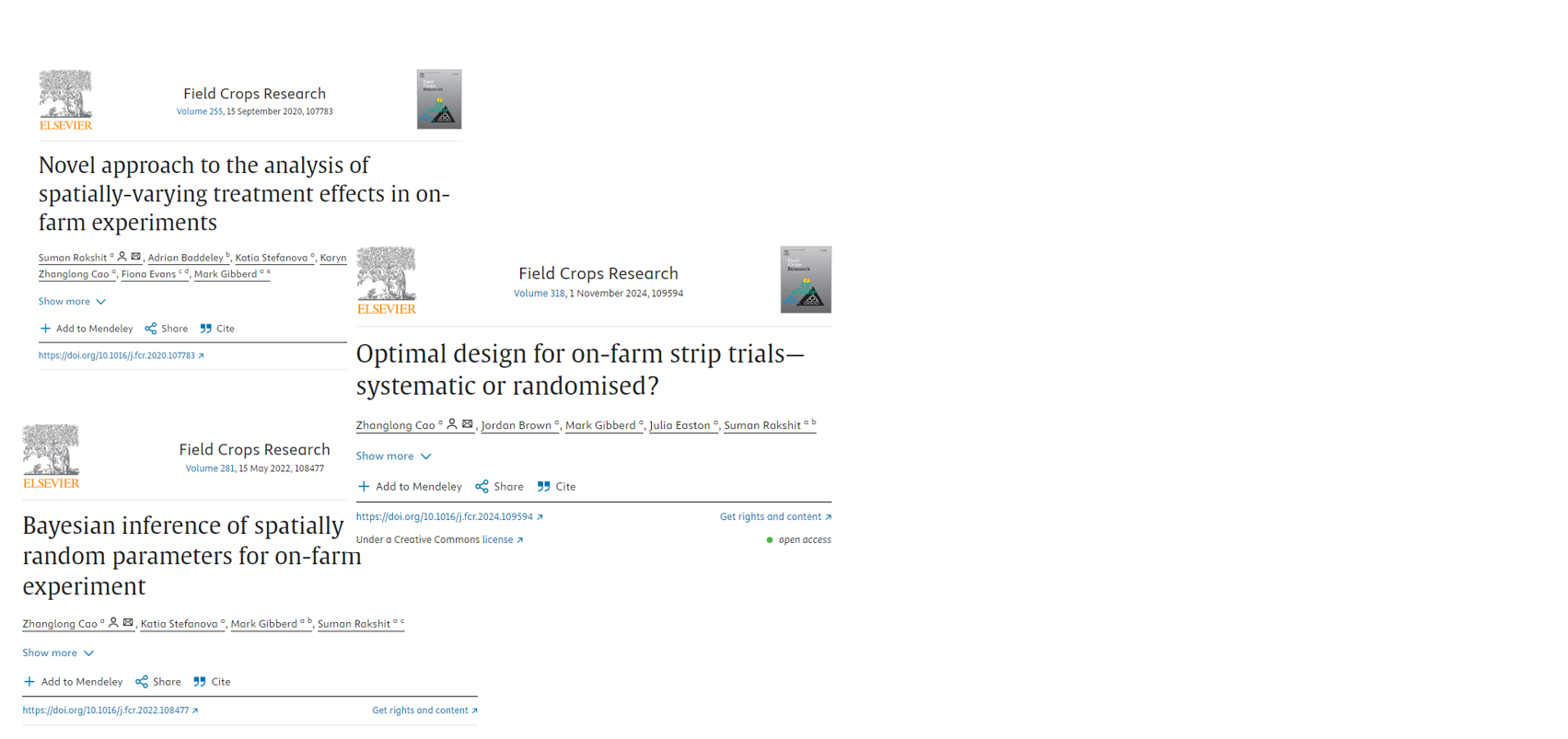
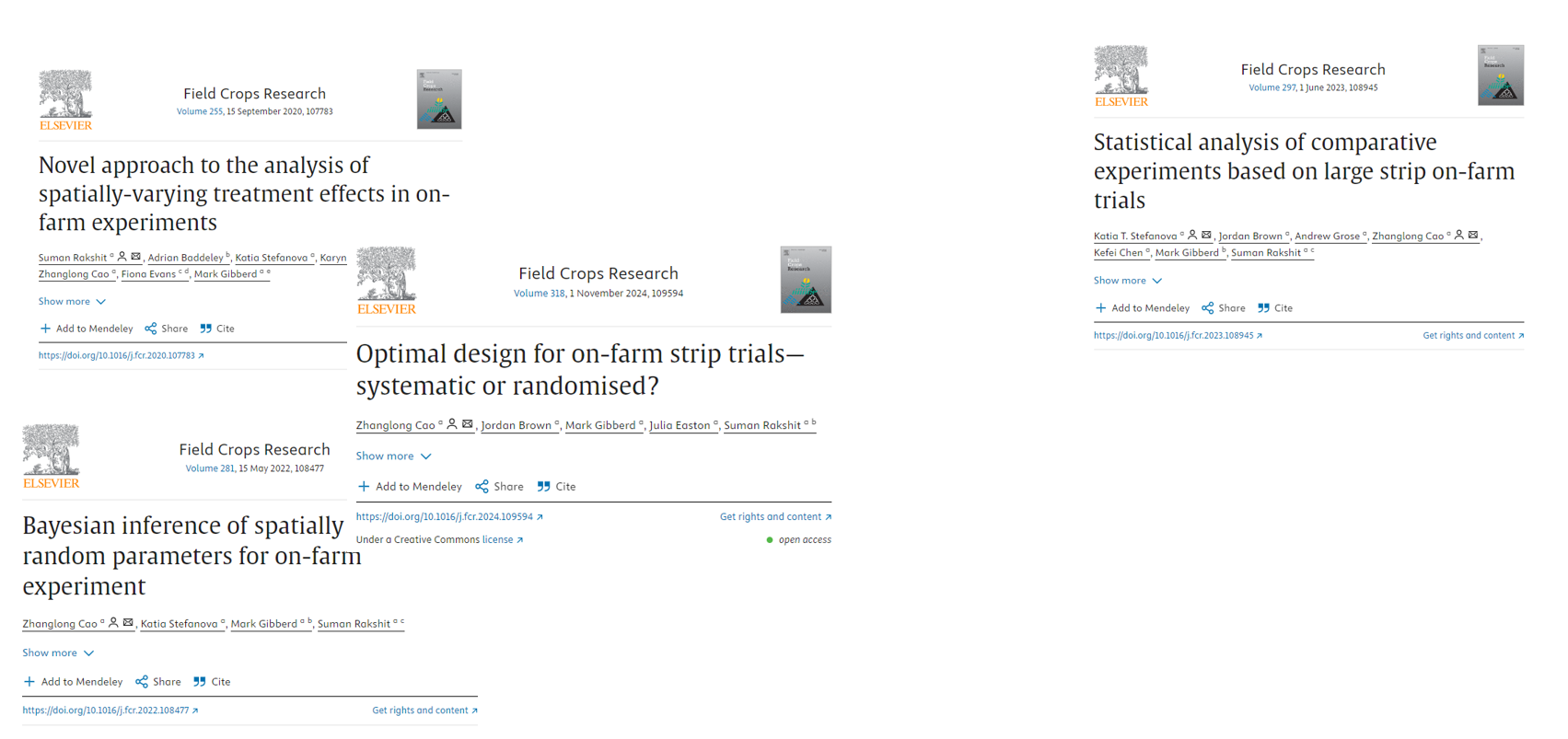
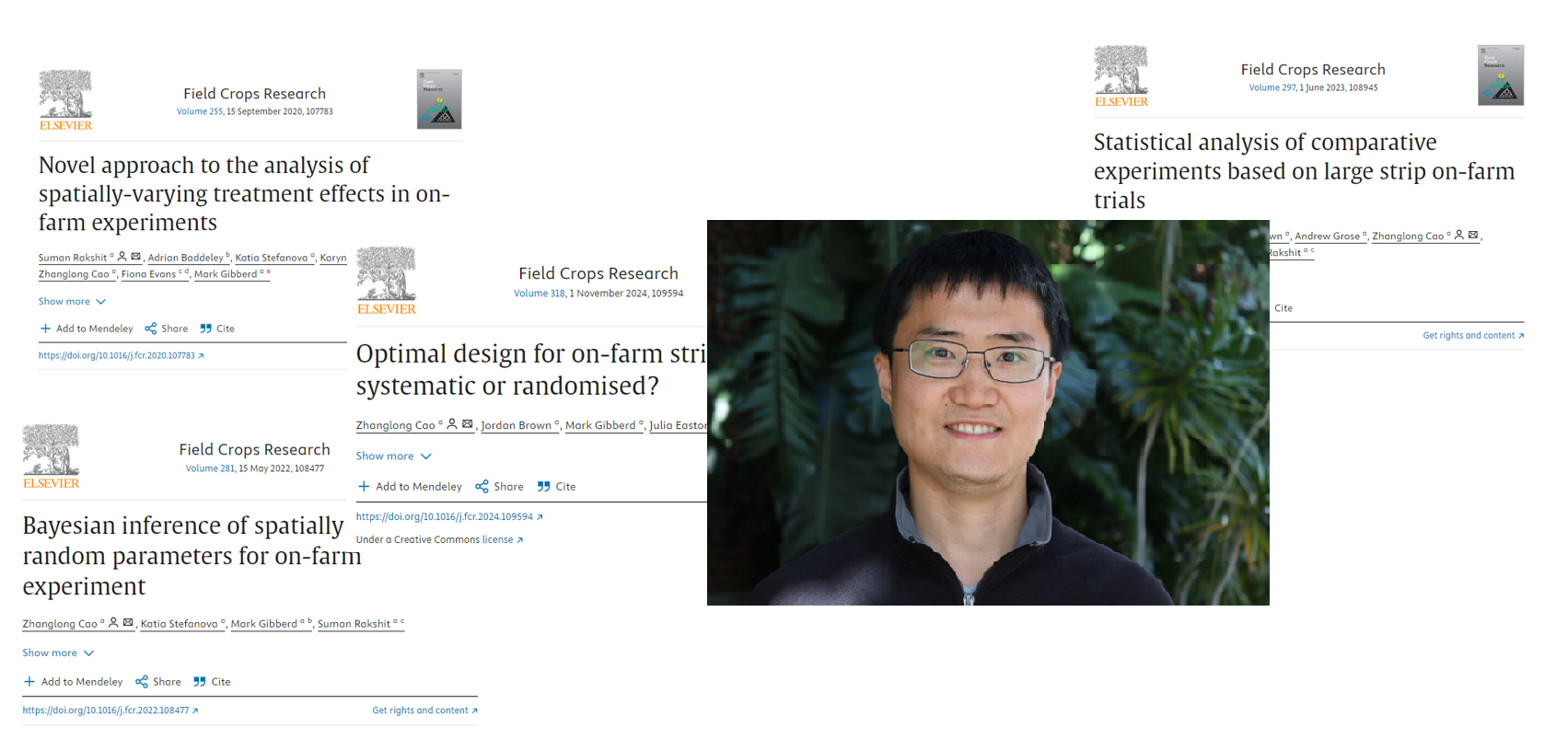
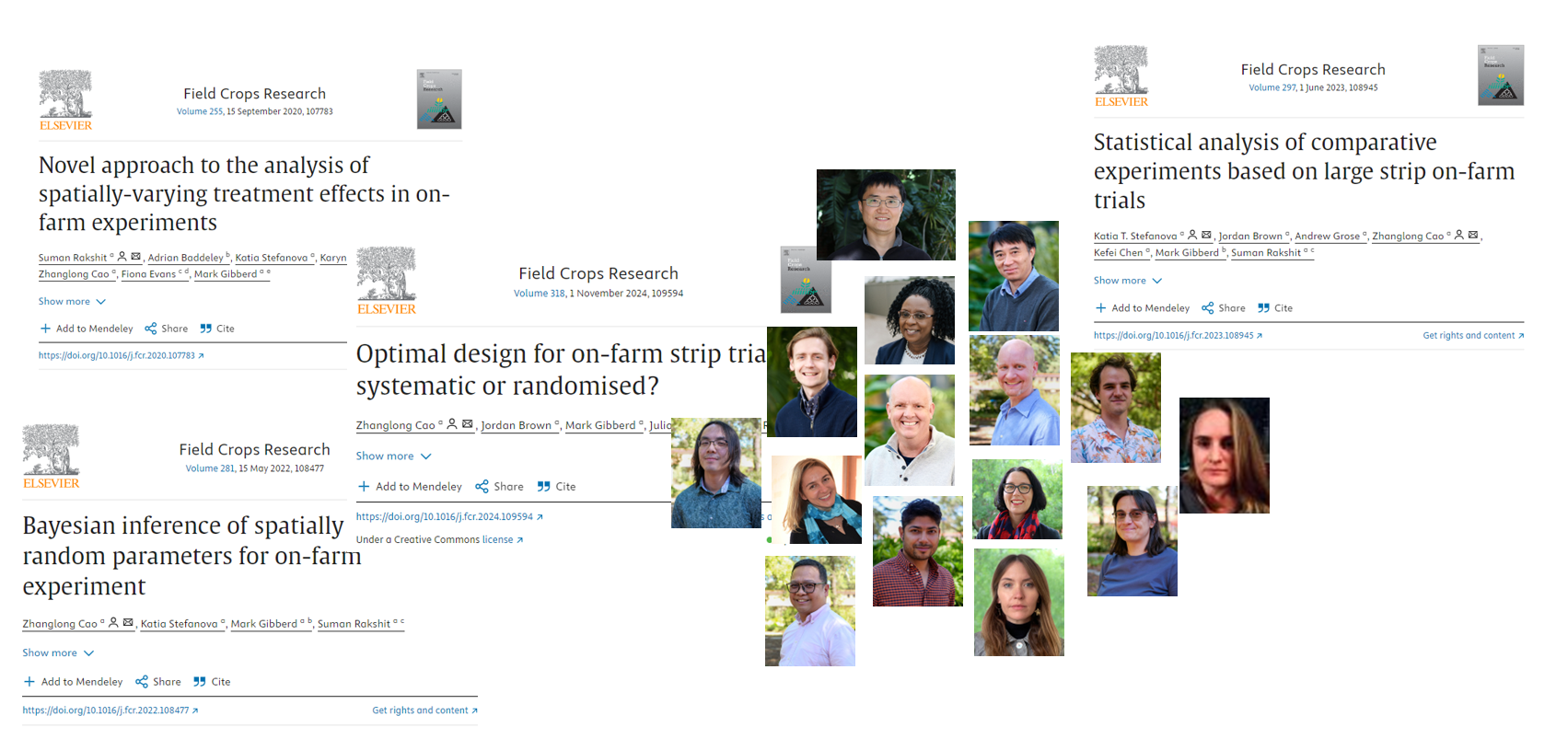
References
Thank you.
